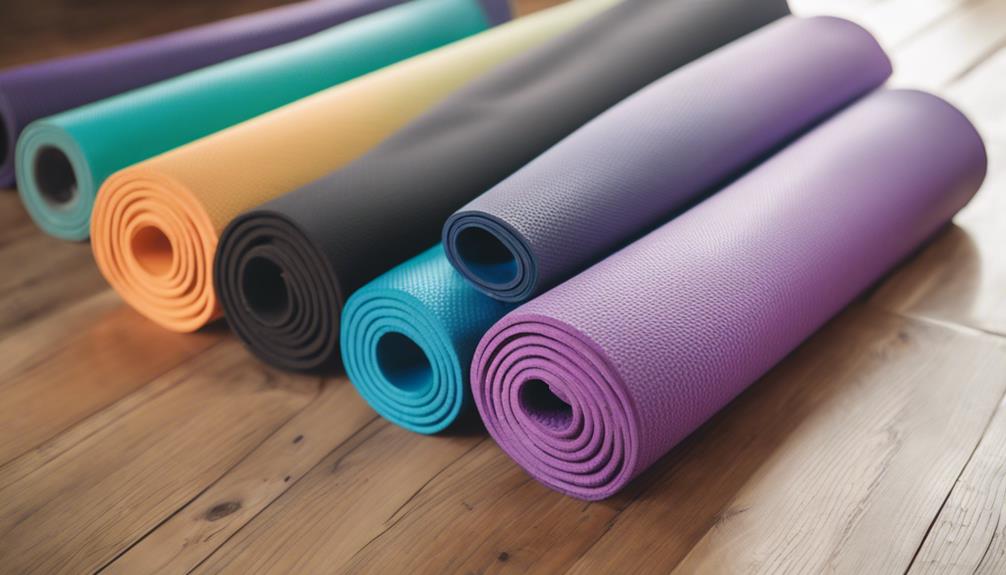What Are Yoga Mats Made Of? ===
Have you ever wondered what lies beneath your feet during a calming yoga session? The answer to the question "what are yoga mats made of?" is more fascinating than you might think! Yoga mats are not just simple pieces of material; they are carefully crafted tools designed to enhance your practice while providing comfort and support. Understanding the composition of yoga mats can help you choose the right one that aligns with your values—be it sustainability, durability, or comfort.
In this article, we will delve deep into the various materials that make up yoga mats, focusing on their unique characteristics and benefits. Whether you’re a seasoned yogi or a beginner just stepping onto the mat, knowing what your mat is made of can boost your performance and your peace of mind. So, let’s embark on this enlightening journey together as we investigate the exciting world of yoga mat materials!
From natural fibers to synthetic solutions, the universe of yoga mats is rich and diverse. Get ready to unveil the secrets of these mats and discover how they can impact your yoga experience!
Unraveling the Mystery: What Are Yoga Mats Made Of?
When it comes to exploring what yoga mats are made of, we discover a plethora of materials crafted to suit different needs. The most common materials include PVC (polyvinyl chloride), TPE (thermoplastic elastomer), natural rubber, and jute. PVC mats are widely popular due to their affordability, durability, and non-slip surface. However, they are not the most eco-friendly choice, leading many practitioners to look for alternatives.
Natural rubber is another prevalent material used in yoga mats. Sourced from rubber trees, these mats offer exceptional grip and cushioning, making them a favorite among serious yoga enthusiasts. They provide excellent support while being biodegradable, which resonates with the environmentally conscious yogi. However, it’s essential to consider that natural rubber mats may have a slightly stronger odor when new, which diminishes over time.
TPE mats, on the other hand, are a newer option that combines durability with an eco-friendly twist. Made from a blend of plastic and rubber, TPE mats are lightweight, recyclable, and free from harmful chemicals. They tend to be softer and more cushioned than PVC mats, offering a pleasant experience for practitioners. As you can see, when pondering what yoga mats are made of, there’s a world of materials to discover, each with its own set of benefits and drawbacks!
From Eco-Friendly to Foam: The Materials Behind Your Mat!
The world of yoga mats is continually evolving, with eco-friendly materials gaining popularity among mindful practitioners. One such material is jute, a natural fiber that’s often blended with rubber to create mats that are both sustainable and durable. These mats not only provide excellent grip but also bring a unique texture to your practice, enhancing the sensory experience of yoga. Jute mats are perfect for those who prioritize environmental responsibility without sacrificing quality.
Another exciting material making waves in the yoga community is cork. Cork mats are made from the bark of cork oak trees, which are harvested without harming the tree, making it a sustainable option. These mats are naturally antimicrobial, providing a hygienic surface to practice on, and they offer excellent cushioning and grip. If you’re someone who enjoys a natural aesthetic, cork mats can give your yoga space a lovely earthy feel.
Lastly, let’s not forget about foam mats. While they may not be the first choice for serious yoga practitioners, they serve a purpose for beginners or those practicing in a more relaxed setting. Foam mats are lightweight, affordable, and provide adequate cushioning for those just starting their yoga journey. They come in various thicknesses and colors, making them a fun choice for kids or casual yogis looking to explore their yoga practice without a hefty investment.
Finding the Right Yoga Mat for You ===
As we wrap up our exploration of what yoga mats are made of, it’s clear that there’s no one-size-fits-all solution. Each material brings its own unique benefits and considerations, allowing you to choose a mat that aligns with your values and practice style. Whether you lean towards eco-friendly options like natural rubber and jute, or prefer the affordability and durability of PVC, the right yoga mat can significantly enhance your experience on the mat.
By understanding the materials that compose your yoga mat, you can make an informed choice that elevates your practice while staying true to your beliefs. So the next time you roll out your mat, you’ll not only enjoy the feel of it beneath your feet but also appreciate the materials that support your journey toward inner peace and well-being. Happy practicing!
